Although dinosaurs lived many millions of years ago, we know that they existed because some of them turned into fossils when they died. Watch our animation to discover how this happened, and explore the process in more detail below.
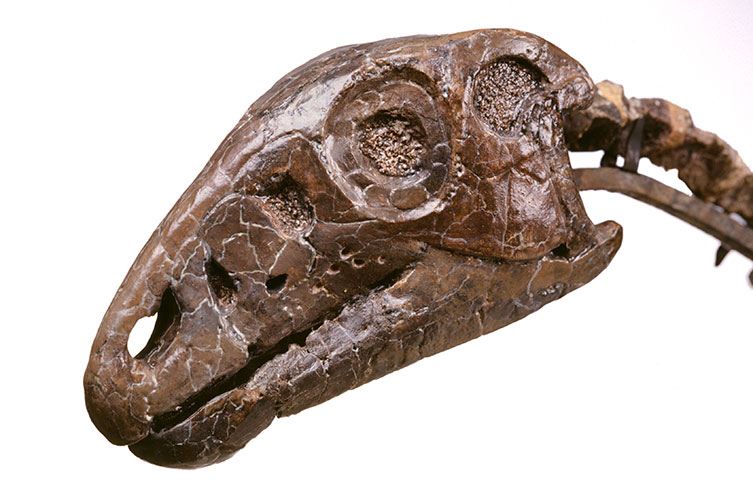
Fossilised skull of the dinosaur Hypsilophodon, which was found in England and is around 125 million years old
What is a fossil?
A fossil is physical evidence of a prehistoric plant or animal. This may be their preserved remains or other traces, such as marks they made in the ground while they were alive.
Fossilised remains - including fossil bones and teeth - are known as body fossils. Fossilised shells are also body fossils.
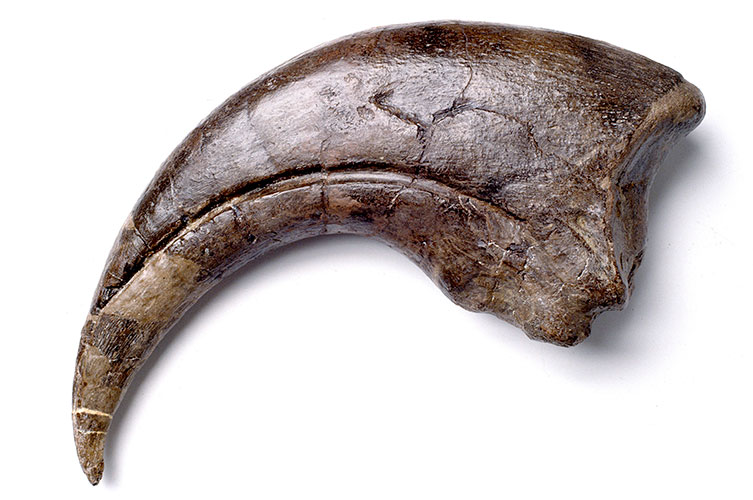
Fossilised claw of Baryonyx, another British dinosaur. Claws, like fossil skulls and skeletons, are body fossils.
Other fossilised signs of a plant or animal are called trace fossils. Dinosaur trace fossils include footprints, imprints of their skin or feathers, and poo - called coprolites.
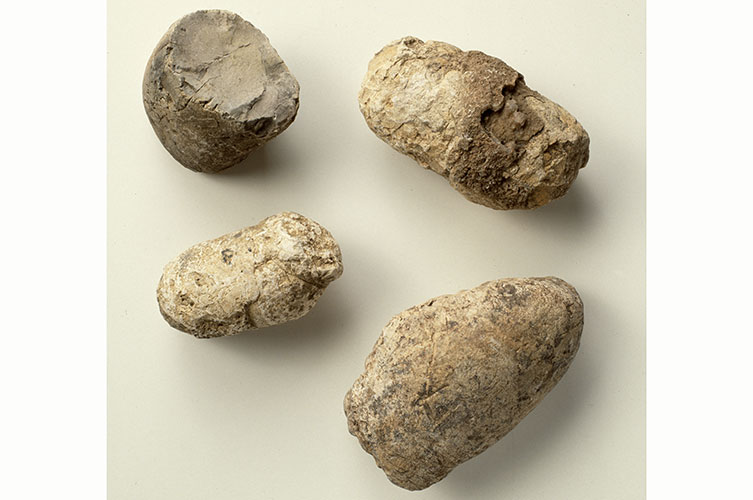
Fossilised dinosaur poo is an example of a trace fossil
Does everything fossilise?
Do all living things turn into a fossil once they die? No! Very few things do. A specific set of circumstances and conditions are needed for fossilisation to occur, so it is actually a very rare event.
Most things that die rot away completely, leaving nothing behind.
Nearly all fossils we find - around 99% - are from marine animals such as shellfish and sharks. This is because they lived in the sea, where sand or mud could bury their remains quickly after they died.
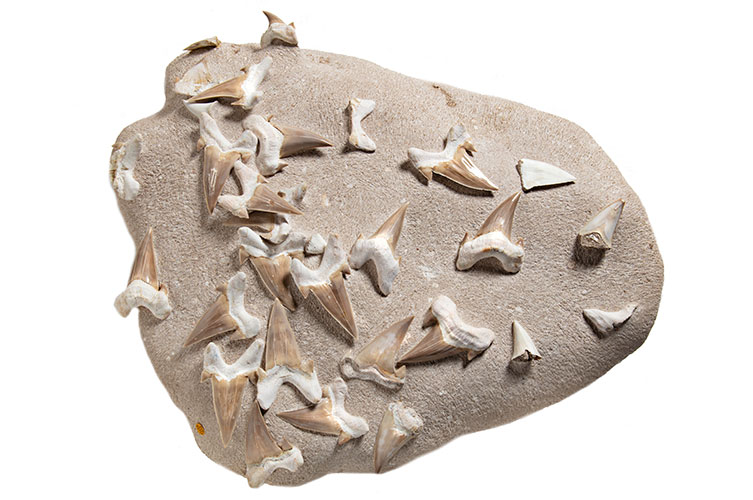
Shark teeth are particularly common fossils
Once remains are buried under sediment, their decomposition slows down due to a lack of oxygen, giving enough time for fossilisation to occur.
But dinosaurs lived on land, so how did they get buried quickly enough for some of them to fossilise?
Dr David Button, a dinosaur researcher at the Museum, says, 'Most of the dinosaur fossils we find are from animals that were living near to a lake or river.
'Some died shortly before the area flooded and covered their remains in mud and silt. Others were washed into a river by heavy rain.'
Occasionally something more dramatic happened - watch the video above to find out what.
David adds, 'We don't know about many dinosaurs that lived in jungle or mountain environments. Fossils are very unlikely to form in such situations.'
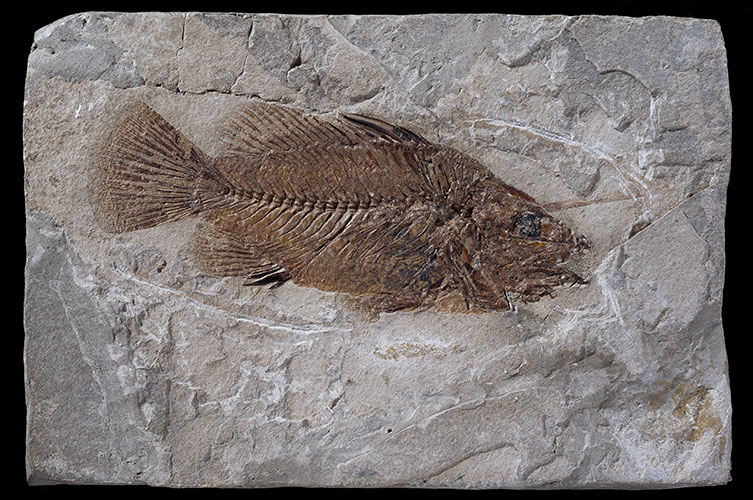
A fish fossil. Nearly all fossils we find are from marine animals because sediments like mud and sand quickly bury their remains.
How do fossils form?
The most common way an animal such as a dinosaur fossilises is called petrification. These are the key steps:
1. The animal dies.
2. Soft parts of the animal's body, including skin and muscles, start to rot away. Scavengers may come and eat some of the remains.
3. Before the body disappears completely, it is buried by sediment - usually mud, sand or silt. Often at this point only the bones and teeth remain.
4. Many more layers of sediment build up on top. This puts a lot of weight and pressure onto the layers below, squashing them. Eventually, they turn into sedimentary rock.
5. While this is happening, water seeps into the bones and teeth, turning them to stone as it leaves behind minerals.
This process can take thousands or even millions of years.
David adds, 'The water leaves mineral crystals behind in spaces in the bones. This is why dinosaur fossils often have a sponge- or honeycomb-like texture: the internal bone structure has been preserved.'
Tree fossils, also known as petrified wood, form in the same way. This is why it's possible to count the growth rings of some fossil trees.
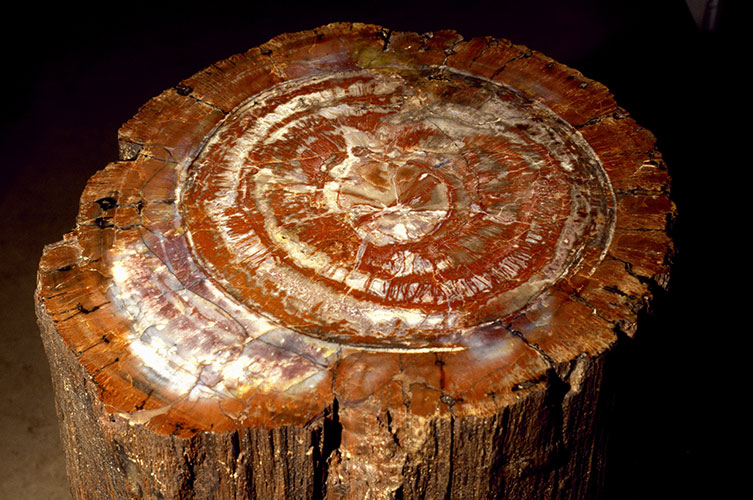
You can see growth rings in some tree fossils, such as this petrified tree trunk
Mould and cast fossils
Sometimes ground water dissolves the buried bone or shell, leaving behind a bone- or shell-shaped hole or imprint in the sediment. This is a natural mould.
If water rich in minerals fills this space, crystals can form and create a fossil in the shape of the original bone or shell, known as a cast fossil. Or sediment can fill the mould and form a cast fossil.
These are the most common ways that marine animals with shells fossilise. This includes ammonites that went extinct at the same time as dinosaurs, as well as shellfish that are more like the limpets, oysters and mussels we can still find living on the beach today.
Trace fossils such as footprints form in a similar way. The footprint forms a natural mould and sediment then fills it forming a cast.
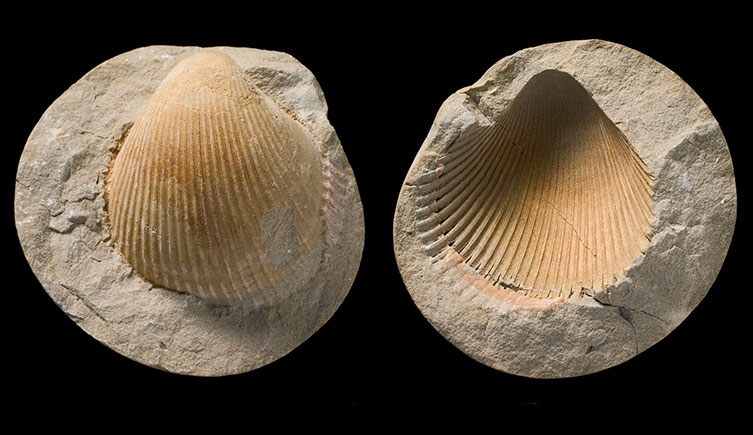
Fossilised bivalve preserved as an internal and an external mould. The shell itself has dissolved away.
Uplift, weathering and erosion: why we can find fossils
How do we find fossils when they've been buried under millions of years' worth of rock? It's down to a combination of uplift, weathering and erosion (plus luck).
Earth's surface is broken up into huge, irregularly shaped pieces - tectonic plates - that fit together like a jigsaw. These plates drift around very slowly, driven by heat from within Earth.
In certain parts of the world, these plates will collide. This can force areas of rock together and push them upwards. In the most dramatic instances, such uplift can form mountain ranges. This is why fossils of marine animals can be found at the top of Mount Everest.
In places that were once covered by huge, heavy ice sheets that have now melted, rocks also undergo uplift.
Rocks can also be pushed up slowly by new igneous rocks forming underneath them.
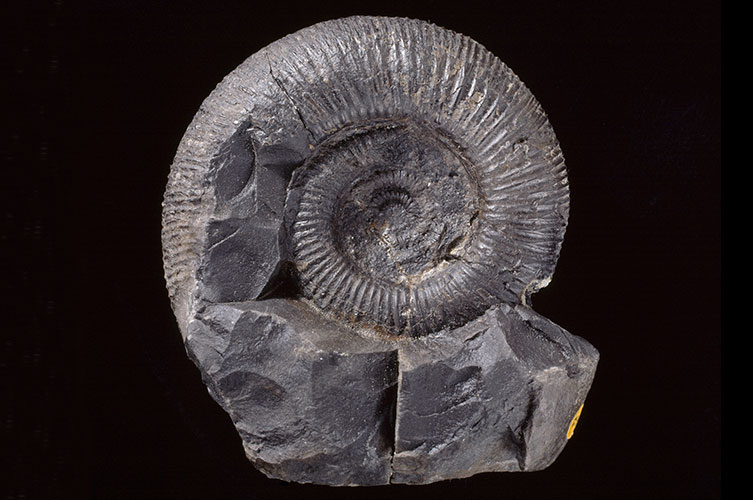
An ammonite fossil collected from more than 5,000 metres above sea-level in the Himalayas in Asia
Uplift is only part of the story. Weathering and erosion from wind, rain, ice, heat and rivers break rocks apart and wash the fragments away.
David says, 'It can take millions of years, but gradually fossils become exposed at the surface where we can find them.
'Because of how they form, fossils occur in sedimentary rocks. So if you're going fossil hunting, that's where you should look.'
Ask our scientists
Do you have a burning question about science or nature you want answered? Fill out the form below and we'll work with our scientists to answer some of them in our online magazine Discover or on our YouTube channel.
This new feature is in beta. Find out more.
Video dinosaur silhouette image credits
Video dinosaur silhouettes adapted and inspired from:
Diplodocus © Scott Hartman [CC BY 3.0], via Phylopic
Allosaurus © Scott Hartman [CC BY-NC-SA 3.0], via Phylopic
Ceratosaurus © Scott Hartman [CC BY-NC-SA 3.0], via Phylopic
Protoceratops © Emily Willoughby [CC BY-SA 3.0], via Phylopic
Velociraptor © Fred Wierum [CC BY-SA 4.0], via Wikimedia Commons
Citipati © Emily Willoughby [CC BY-SA 3.0], via Phylopic
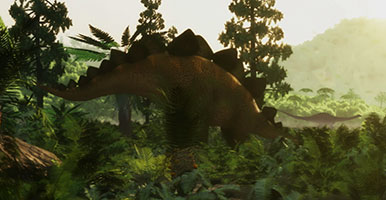
Discover dinosaurs
Find out what Museum scientists are revealing about how dinosaurs looked, lived and behaved.
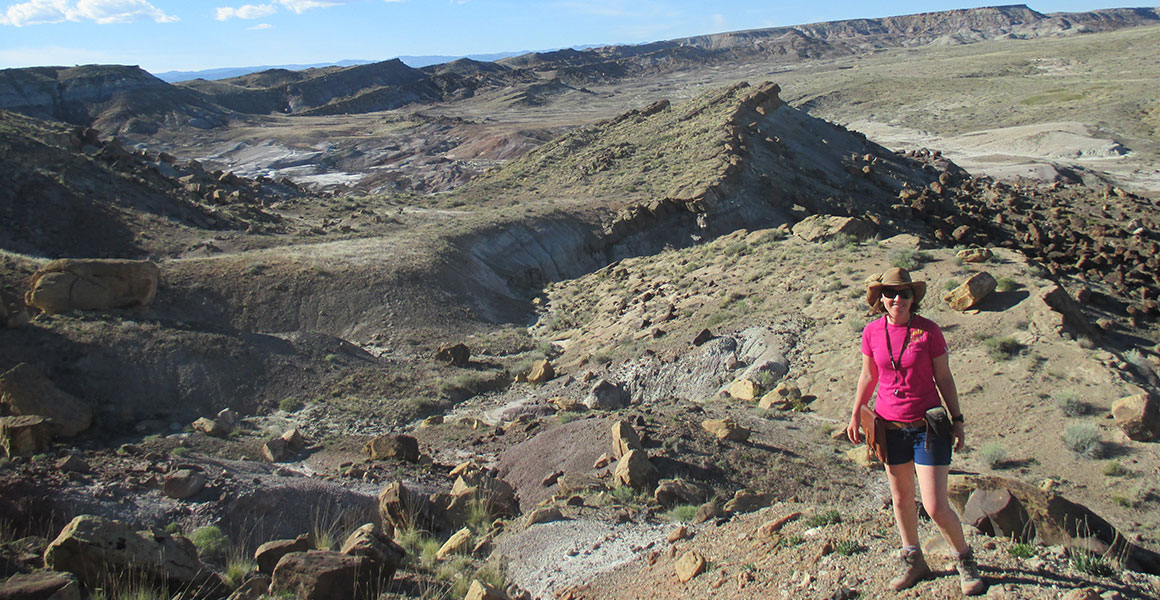
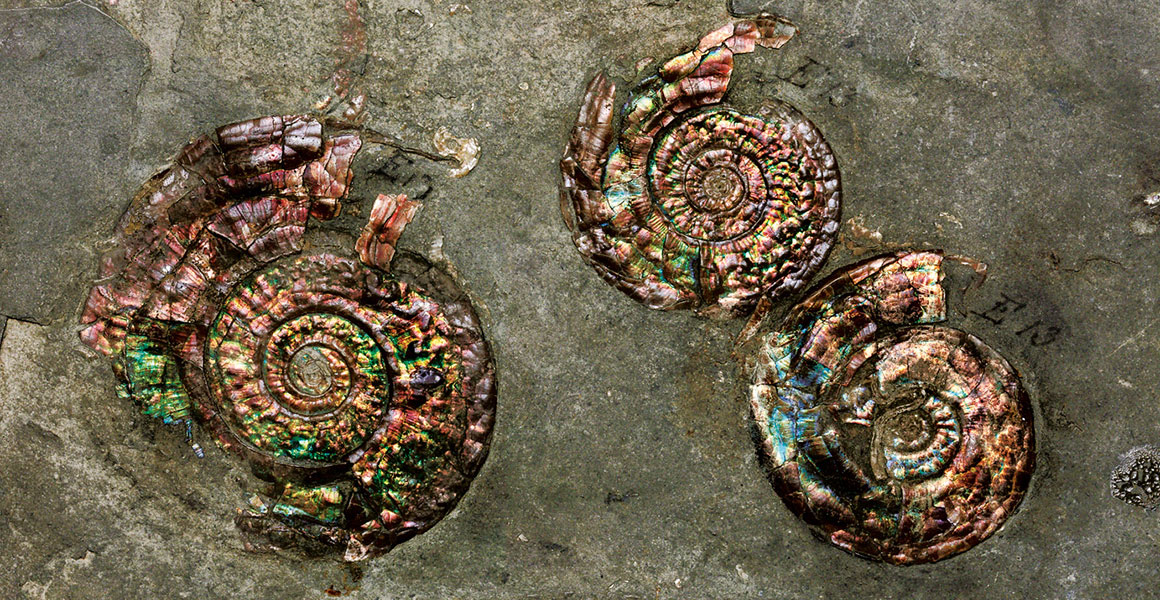


Don't miss a thing
Receive email updates about our news, science, exhibitions, events, products, services and fundraising activities. We may occasionally include third-party content from our corporate partners and other museums. We will not share your personal details with these third parties. You must be over the age of 13. Privacy notice.
Follow us on social media